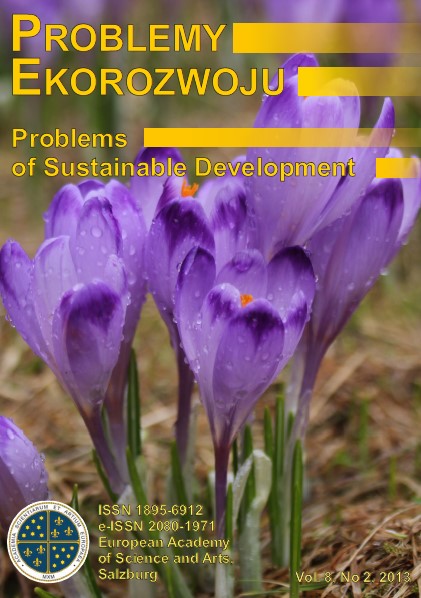Wymuszone przesiedlenia a rozwój zrównoważony: przypadek zapory Slezská Harta w Republice Czeskiej
Zuzana Cahliková, Robert Stojanov
Department for Adaptation Strategies Research, Global Change Research Centre, Academy of Sciences of the Czech Republic, v.v.i., Belidla 986/4a, 603 00 Brno, Czech Republic
E-mail: zuzana.cahlikova@gmail.com, stojanov@centrum.cz
Abstract
The main aim of this paper is to provide an overview of the issue of development-induced displacement in the context of sustainable development. We examine causes and spatial distribution of development-induced displacement and its impacts on social and economic situation of displaced persons (displacees) and affected communities. We focus on the issue also in the context of political and societal transformation in the Czech Republic (and Czechoslovakia before 1989). The discussion will rely both on a literature review and on a case study analysing the development-induced displacement linked to the construction of dam Slezská Harta in the Czech Republic in late 1980s and early 1990s. An analysis of available documents and other written sources (e.g. chronicles of villages) and semi-structured in-depth interviews with displacees and other affected people were carried out. Adverse processes, which ultimately lead to the deterioration of living standards of displaced people, often accompany development-induced displacement. The case of the displacement caused by the construction of Slezská Harta dam is not the exception, although the impact on the displaced persons must be perceived individually. Negative consequences of development-induced displacement could be mitigated by using the principle of sustainable development during planning and the implementation of a development project.
Key words: development-induced displacement, sustainable development, Czech Republic, Slezská Harta Dam, environmentally induced migration
Streszczenie
Celem niniejszej pracy jest omówienie zjawiska wymuszonych przesiedleń spowodowanych ekspansją ludzkiej infrastruktury – w kontekście rozwoju zrównoważonego. Przeanalizowano rozkład przestrzenny przesiedleń i ich wpływ na społeczną i ekonomiczną sytuację osób i przesiedlonych grup społecznych. Szczególna uwagę zwrócono na kontekst konsekwencji politycznej i społecznej transformacji dokonanej w Republice Czeskiej (przed 1989 r. Czechosłowacji). Dyskusja zostanie oparta zarówno na przeglądzie literaturowym jak i na konkretnym przykładzie przesiedleń związanych z budową zapory Slezská Harta przeprowadzonej na przełomie lat 80/90. Analiza uwzględnia dostępne oficjalne dokumenty i inne źródła, takie jak wiejskie kroniki oraz wywiady przeprowadzone z przesiedlonymi. Zaobserwowano niekorzystny proces związany z pogarszaniem się warunków życia osób dotkniętych przesiedleniem, choć każdą przesiedloną osobę należy traktować indywidualnie. Należy podkreślić, że obserwowane negatywne skutki przesiedleń są możliwe do zminimalizowania, o ile już na etapie planowania danej inwestycji kierować się będziemy zasadą zrównoważonego rozwoju.
Słowa kluczowe: przesiedlenia rozwojowe, rozwój zrównoważony, Republika Czeska, Slezská Harta Dam, migracja środowiskowa
Problemy Ekorozwoju 8(2)2013: 75-84
